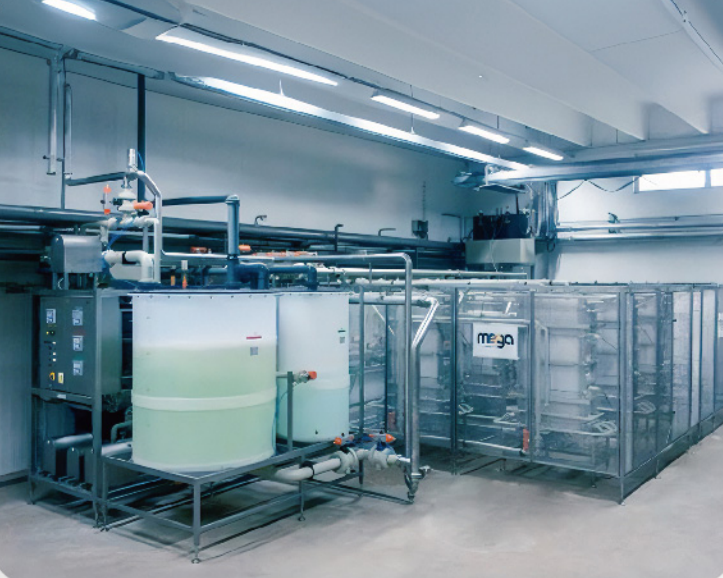Precise Ion Management

Electrodialysis (EDI) Systems harness the power of electricity and specialized membranes to achieve highly efficient and chemical-free separation of ions in various liquid solutions. At the heart of EDI technology lies the intelligent design of ion-exchange membranes.
These membranes are engineered with a network of fixed functional groups and dissociable ions, granting them a crucial characteristic:
selective permeability and conductivity for specific ions present in the solution. This inherent selectivity forms the basis for a wide array of separation and purification applications across diverse industrial and environmental sectors.
The versatility of Electrodialysis has established it as a cornerstone in electrochemical processing.
Its applications span from large-scale desalination of seawater and brackish water, providing vital sources of potable water in arid and coastal regions, to the precise desalting and concentration of various solutions in industrial processes.
EDI plays a critical role in the electrolytic preparation of inorganic compounds and the complex task of recovery and purification of radioactive elements, demanding high levels of selectivity and control.
Furthermore, it offers an efficient and environmentally sound method for softening and desalting boiler water, crucial for preventing scale formation and ensuring the longevity of power generation equipment.
The benefits of Electrodialysis extend to the processing of a vast range of industrial products across sectors such as metallurgy, coal, electronics, medicine, chemical industry, and food processing.
The inherent advantages of EDI, including no chemical consumption, simple equipment design, and ease of operation, make it an attractive and sustainable alternative to traditional separation techniques that often rely on chemical additives and generate secondary waste streams.
In the realm of wastewater treatment, Electrodialysis demonstrates its significant potential in addressing various environmental challenges:
Alkali Recovery from Papermaking Waste: EDI enables the efficient treatment of alkali papermaking waste liquid, allowing for the valuable recovery of alkali from the concentrated stream for reuse in the process, while simultaneously recovering lignin from the dilute stream, contributing to resource efficiency and reduced waste.
Heavy Metal Ion Separation and Concentration:
Electrodialysis offers a powerful tool for separating and concentrating heavy metal ions from industrial wastewater. This concentrated stream can then be subjected to further treatment for safe disposal or, more ideally, for the valuable recovery and recycling of the metals, promoting a circular economy and reducing the environmental impact of heavy metal discharge.
Radioactive Element Separation:
The selective ion transport capabilities of EDI make it suitable for the challenging task of separating radioactive elements from radioactive wastewater, facilitating safer management and potential volume reduction of hazardous waste.
Sulfuric Acid and Sodium Hydroxide Production from Glauberite Waste:
EDI can be employed to process the waste liquid from glauberite, enabling the production of valuable industrial chemicals like sulfuric acid and sodium hydroxide, transforming a waste stream into valuable resources.
Sulfuric Acid Recovery and Heavy Metal Removal from Pickling Waste:
In metal finishing industries, EDI can be used to recover sulfuric acid from pickling waste liquid while simultaneously removing and concentrating heavy metal ions, allowing for both resource recovery and the treatment of hazardous components.
Electroplating Wastewater and Waste Liquid Treatment:
Electrodialysis has proven particularly effective in treating electroplating wastewater and waste liquid, which often contains a complex mixture of metal ions such as Cu2+, Zn2+, Cr(IV), and Ni2+.
Its application in recovering nickel from nickel plating waste liquid is particularly well-documented, with numerous factory implementations demonstrating the feasibility of achieving closed-loop circulation, minimizing water consumption, reducing chemical usage, and recovering valuable plating materials.
In conclusion, Electrodialysis (EDI) Systems represent a versatile, efficient, and environmentally conscious technology for ion separation across a wide spectrum of industrial and environmental applications. Its chemical-free operation, coupled with its ability to selectively separate and concentrate ions, makes it a crucial tool for resource recovery, pollution control, and the advancement of sustainable industrial practices.
